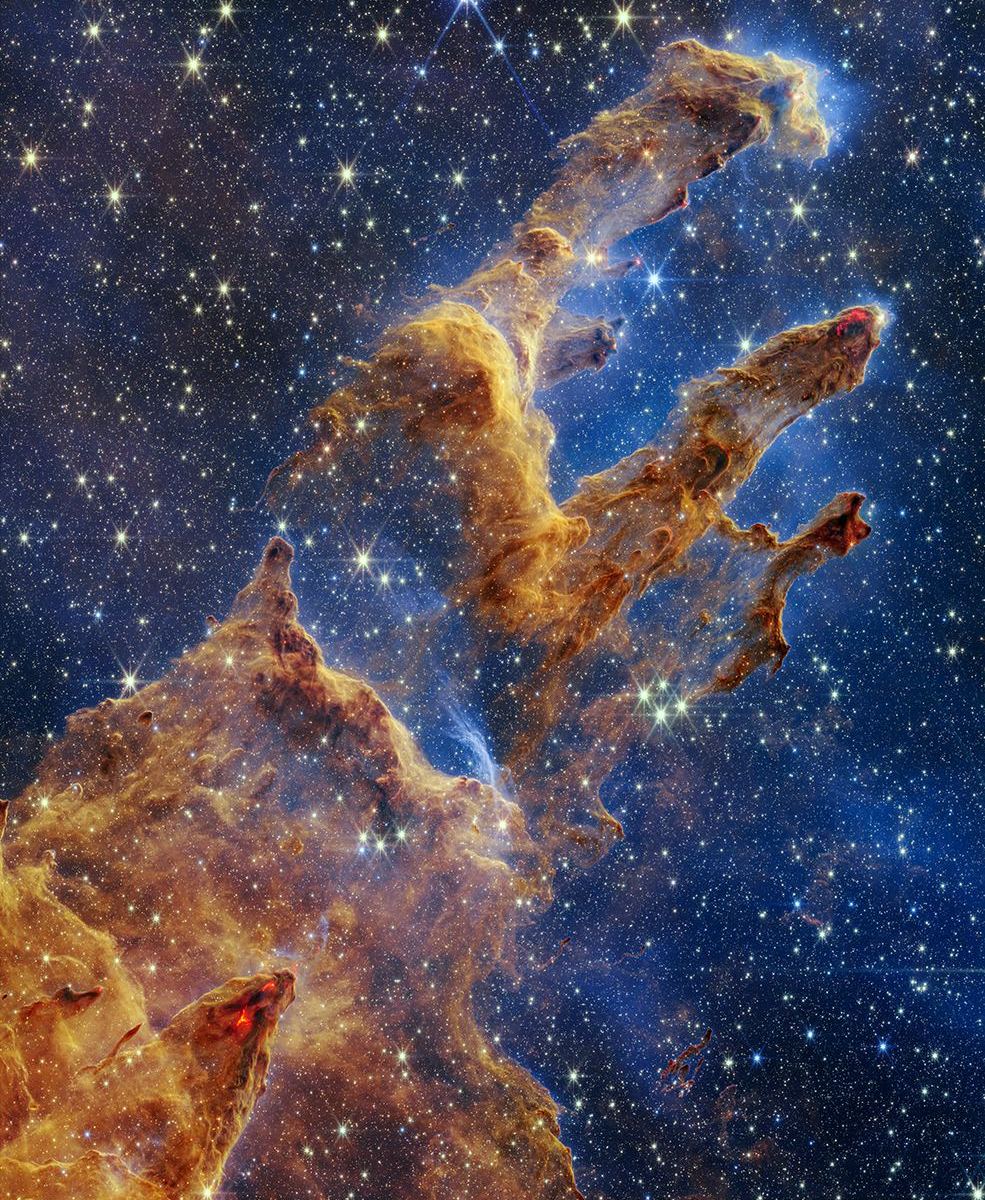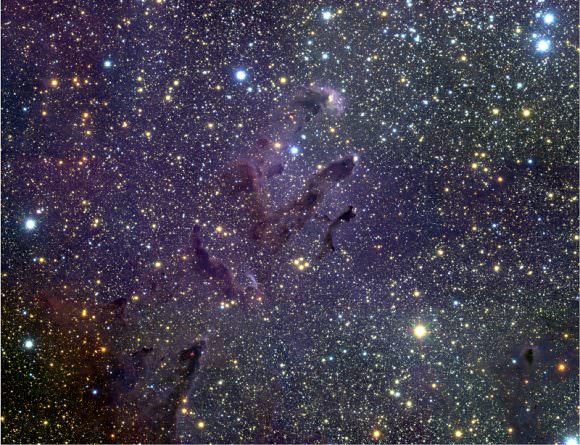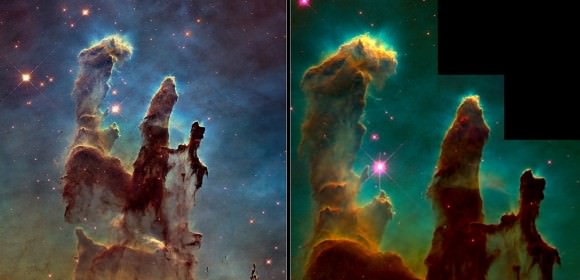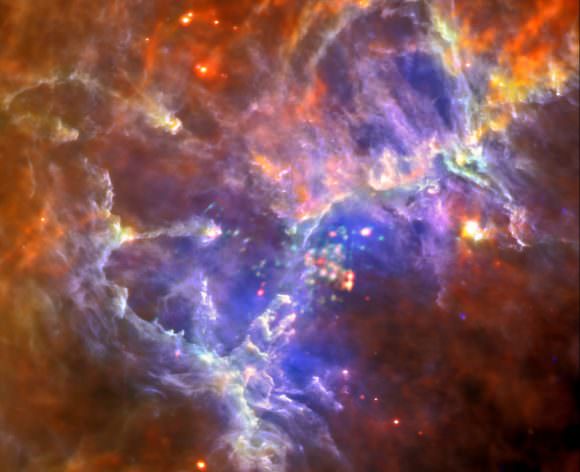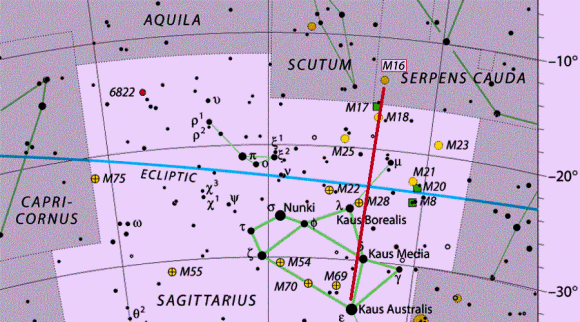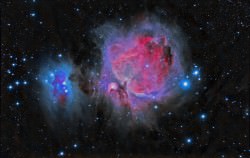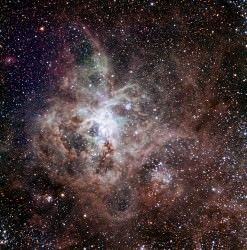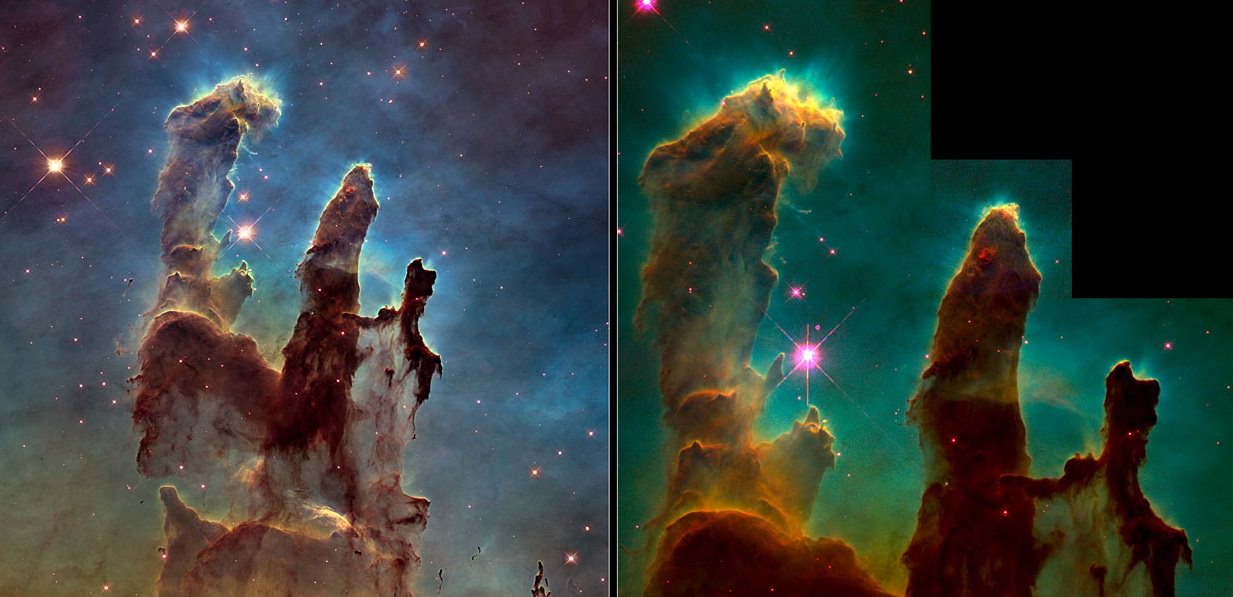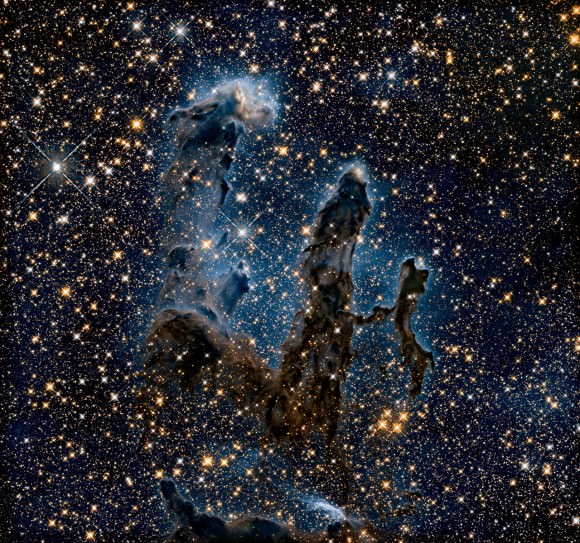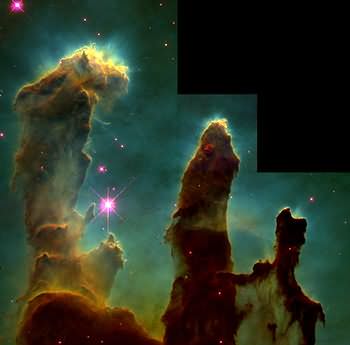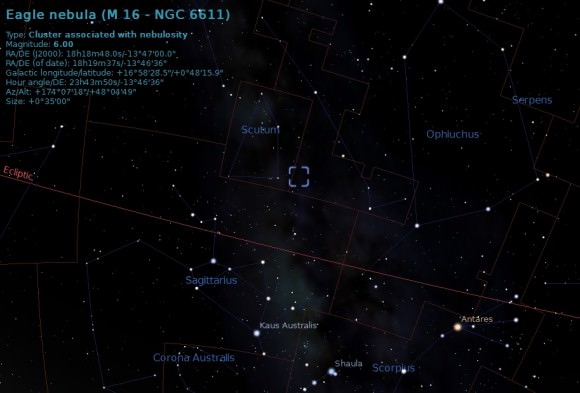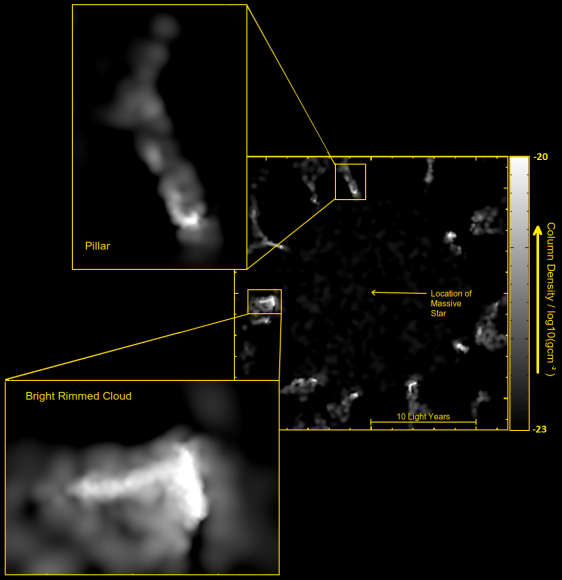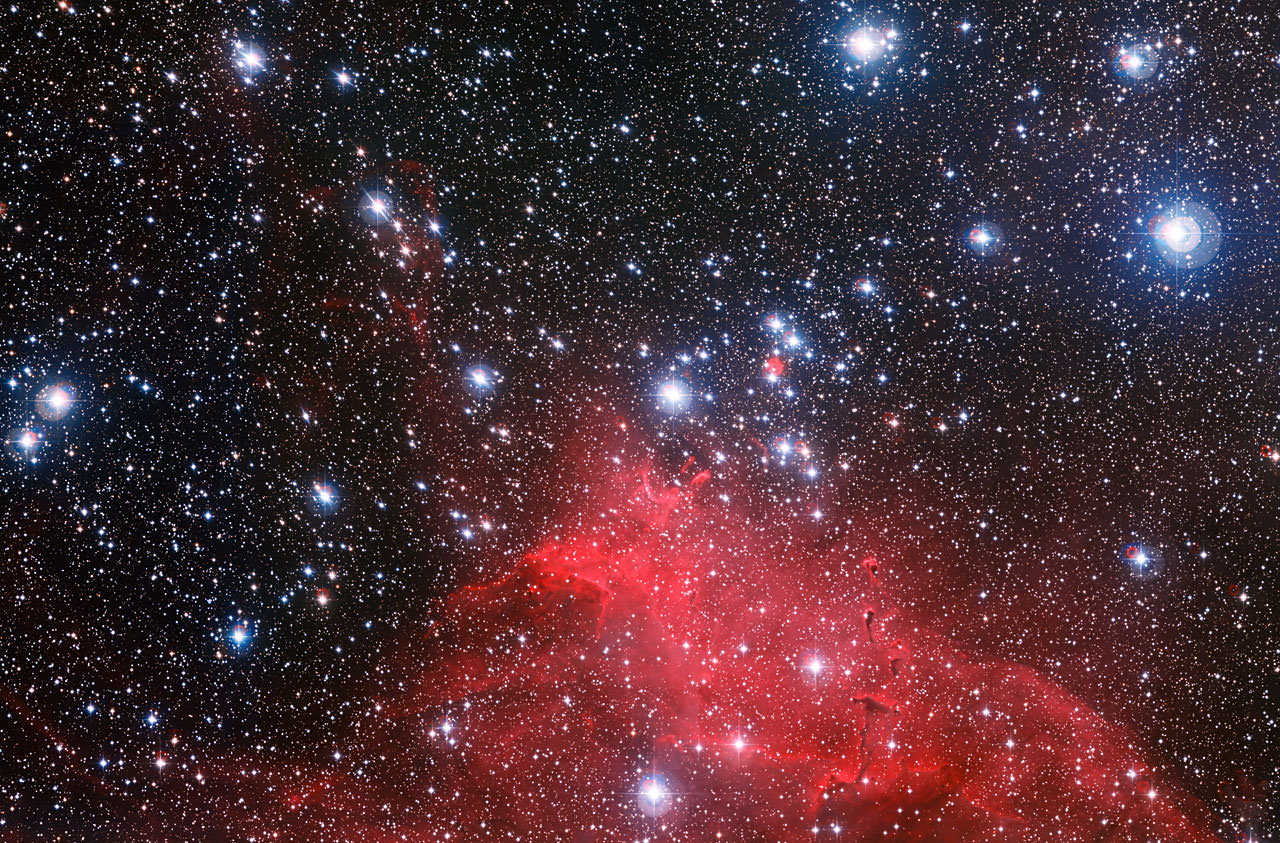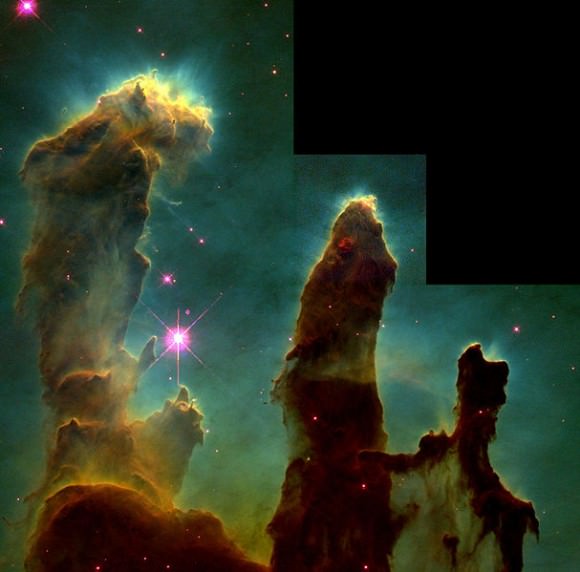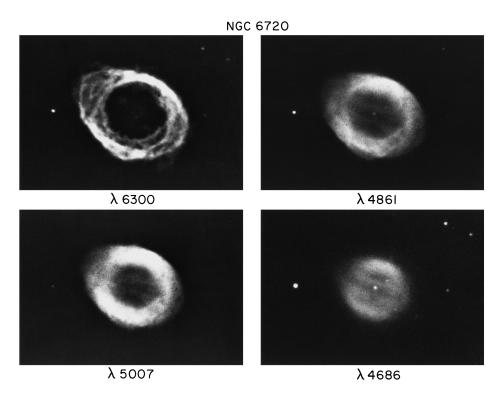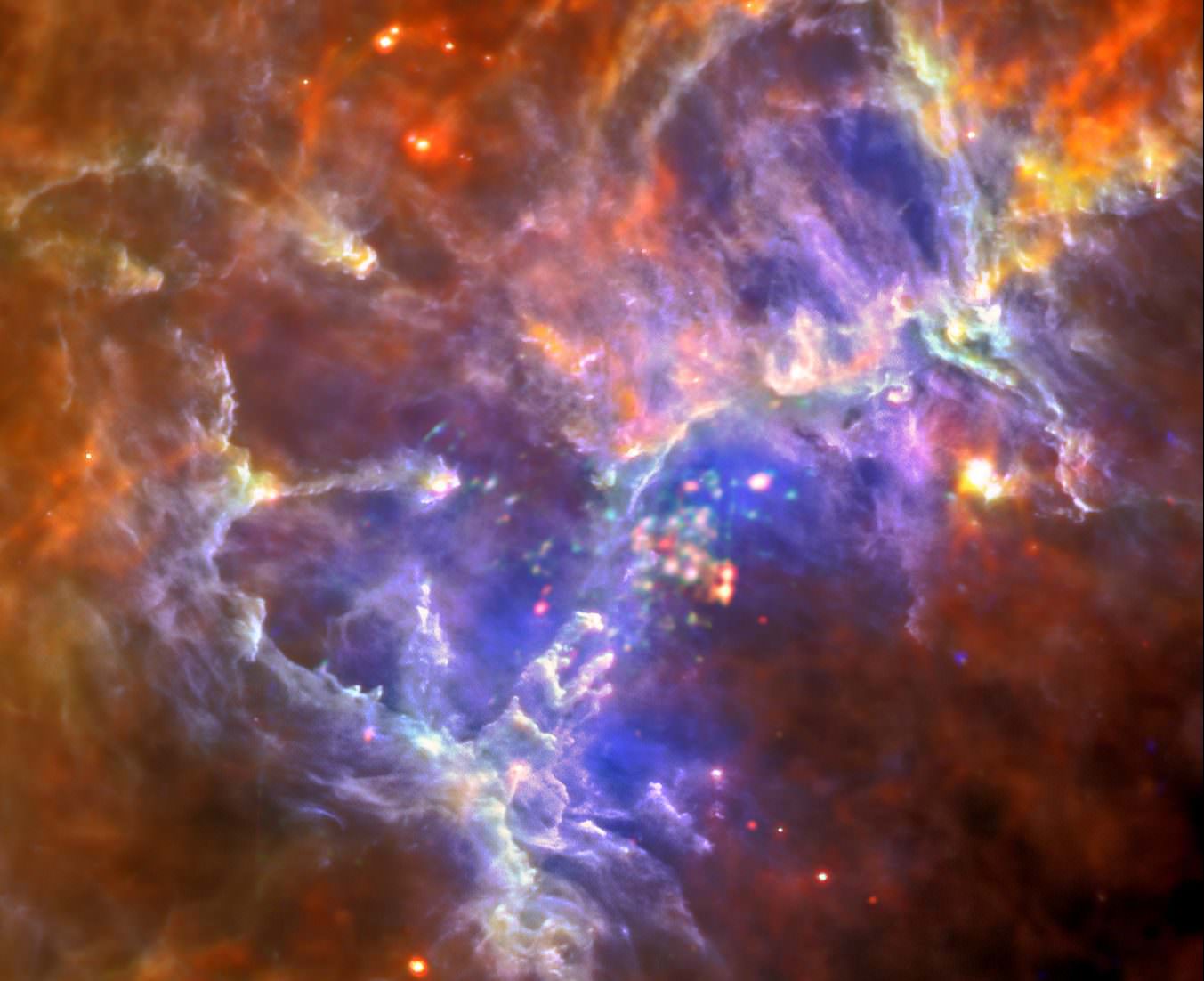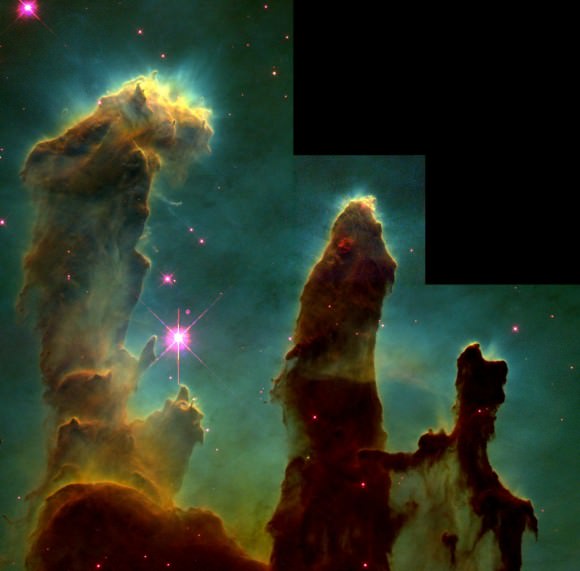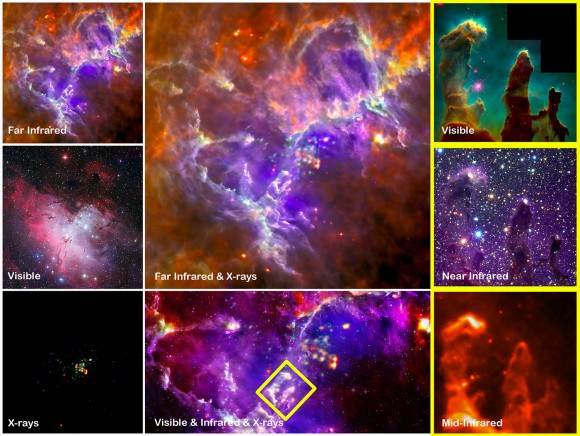Greetings, fellow SkyWatchers! With the change in seasons becoming quickly apparent, it’s time to put some early hours dark skies to good use and enjoy some favorite nebulae. If you’ve enjoyed the Mars-mania, then you’ll also enjoy the return of Mars in the pre-dawn hours. Speaking of early mornings, be sure to watch as the Moon and Jupiter head for a splendid conjunction this coming Saturday. When you’re ready, grab your binoculars and set up your telescopes… It’s time to dance!
Monday, September 3 – Tonight it’s time for us to head directly between the two lower stars in the constellations of Lyra and grab the “Ring”.
First discovered by French astronomer, Antoine Darquier in 1779, the “Ring” was cataloged later that year by Charles Messier as M57 (Right Ascension: 18 : 53.6 – Declination: +33 : 02). In binoculars the “Ring” will appear as slightly larger than a star, yet it cannot be focused to a sharp point. To a modest telescope at even low power, the M57 turns into a glowing donut against a wonderfully stellar backdrop. The average accepted distance to this unusual structure is believed to be around 1,400 light years and how you see the “Ring” on any given night is highly attributable to conditions. As aperture and power increase, so do details and it is not impossible to see braiding in the nebula structure with scopes as small as eight inches on a fine night, or to pick up the star caught on the edge in even smaller apertures.
Like all planetary nebula, seeing the central star is considered the ultimate of viewing. The central itself is a peculiar bluish dwarf which gives off a continuous spectrum and might very well be a variable. At times, this shy, near 15th magnitude star can be seen with ease with a 12.5? telescope, yet be elusive to 31? in aperture weeks later. No matter what details you may see, reach for the “Ring” tonight. You’ll be glad you did.
Tuesday, September 4 – Of course, studying some of the summer’s finest means that we’d be very remiss if we didn’t look at another cosmic curiosity – “The Blinking Planetary”.
Located a couple of degrees east of visible star Theta Cygnii, and in the same lower power field as 16 Cygnii, the NGC 6826 (Right Ascension: 19 : 44.8 – Declination: +50 : 31) is often referred to as the “Blinking Planetary” nebula. Viewable in even small telescopes at mid to high power, you’ll learn very quickly how it came about its name. When you look directly at it, you can only see the central 9th magnitude star. Now, look away. Focus your attention on visual double 16 Cygnii. See that? When you avert, the nebula itself is visible. This is actually a trick of the eye. The central portion of our vision is more sensitive to detail and will only see the central star. At the edge of our vision, we are more likely to see dim light, and the planetary nebula appears. Located around 2,000 light years from our solar system, it doesn’t matter if the “Blinking Planetary” is a trick of the eye or not… Because it’s cool!
Wednesday, September 5 – If you’re up before dawn, maybe you’ve noticed the return of Mars? It’s been on the move and this universal date marks its official change in position from the constellation of Virgo into the constellation of Libra.
Don’t put away your binoculars tonight just because you think this next study is beyond you… Just lift your sights three degrees higher than the “Omega” and tonight we’ll return again to fly with the “Eagle” – M16 (Right Ascension: 18 : 18.8 – Declination: -13 : 47)
Small binoculars will have no trouble distinguishing the cluster of stars discovered by de Cheseaux in 1746, but larger binoculars and small telescopes from a dark sky site will also see a faint nebulosity to the region that was reported by Messier in 1764. This “faint light” will remind you highly of the reflection that is seen within the Pleiades, or “Rosette” nebula. While the most outstanding views of the “Eagle” nebula are in photographs, larger telescopes will have no problem picking out a vague cloud of nebula, encased stars and an unusual dark obscuration in the center which has always reminded this author as a “Klingon Bird of Prey”. While all of this is very grand, what’s really interesting is the little notch on the northeast edge of the nebula. This is easily seen under good conditions with scopes as small as 8? and is undeniable in larger aperture. This tiny “notch” rocketed to worldwide fame when viewed through the eyes of the Hubble. It’s name? “The Pillars of Creation”.
Thursday, September 6 – Today celebrates the founding of the Astronomical and Astrophysical Society of America. Started in 1899, it is now known as the American Astronomical Society.
Tonight let’s relax a little bit and have a look at a superb open cluster that stays superb no matter if you use small binoculars or a big telescope. Of whom do I speak so highly? M34 (Right Ascension: 2 : 42.0 – Declination: +42 : 47)…
Easily found on Perseus west border by scanning between Beta Perseii (Algol) and Gamma Andromeda (Almach), the M34 was discovered by Messier in 1764. Containing around 80 members, the central knot of stars is what truly makes it beautiful. At around 1400 light years away, this stellar collection is believed to be around 10 million years old. While binocular users are going to be very happy with this object, scopists are going to appreciate the fact that there is a double right in the heart of M34. This fixed pair is around magnitude 8 and separated by about 20?.
Friday, September 7 – Tonight we are going to take a journey once again toward an area which has intrigued this author since I first laid eyes on it with a telescope. Some think it difficult to find, but there is a very simple trick. Look for the primary stars of Sagitta just to the west of bright Albireo. Make note of the distance between the two brightest and look exactly that distance north of the “tip of the arrow” and you’ll find the M27 (Right Ascension: 19 : 59.6 – Declination: +22 : 43).
Discovered in 1764 by Messier in a three and a half foot telescope, I discovered this 48,000 year old planetary nebula for the first time in a 4.5? telescope. I was hooked immediately. Here before my eager eyes was a glowing green “apple core” which had a quality about it that I did not understand. It somehow moved… It pulsated. It appeared “living”.
For many years I quested to understand the 850 light year distant M27, but no one could answer my questions. I researched and learned it was made up of doubly ionized oxygen. I had hoped that perhaps there was a spectral reason to what I viewed year after year – but still no answer. Like all amateurs, I became the victim of “aperture fever” and I continued to study the M27 with a 12.5? telescope, never realizing the answer was right there – I just hadn’t powered up enough.
Several years later while studying at the Observatory, I was viewing through a friend’s identical 12.5? telescope and as chance would have it, he was using about twice the magnification that I normally used on the “Dumbbell”. Imagine my total astonishment as I realized for the very first time that the faint central star had an even fainter companion that made it seem to wink! At smaller apertures or low power, this was not revealed. Still, the eye could “see” a movement within the nebula – the central, radiating star and its companion.
Do not sell the “Dumbbell” short. It can be seen as a small, unresolved area in common binoculars, easily picked out with larger binoculars as an irregular planetary nebula, and turns astounding with even the smallest of telescopes. In the words of Burnham, “The observer who spends a few moments in quiet contemplation of this nebula will be made aware of direct contact with cosmic things; even the radiation reaching us from the celestial depths is of a type unknown on Earth…”
Saturday, September 8 – Heads up for early risers! This morning is a beautiful conjunction of Jupiter and the Moon. For viewers in the western regions of Southern America, this is an occultation event, so be sure to check for times in your area!
Today in 1966, a legend was born as the television program Star Trek premiered. Created by Gene Roddenberry, its enduring legacy inspired several generations to an interest in space, astronomy, and technology. Its five-year mission still airs – along with numerous movie and series sequels. May Star Trek continue to “live long and prosper!”
Tonight a great opportunity to have another look at all the things we’ve studied this week. However, I would encourage those of you with larger binoculars and telescopes to head for a dark sky location, because tonight we are going on a quest… The quest for the holy “Veil”.
By no means is the Veil Nebula Complex an easy one. The brightest portion, NGC 6992 (Right Ascension: 20 : 56.4 – Declination: +31 : 43), can be spotted in large binoculars and you can find it just slightly south of a central point between Epsilon and Zeta Cygnii. The NGC 6992 is much better in a 6-8? scope however, and low power is essential to see the long ghostly filaments which span more than a degree of sky. About two and a half degrees west/southwest, and incorporating star 52 is another long narrow ribbon of what may be classified as a supernova remnant. When aperture reaches the 12? range, so does the true breadth of this fascinating complex. It is possible to trace these long filaments across several fields of view. They sometimes dim and at other times widen, but like a surreal solar flare, you will not be able to tear your eyes away from this area. Another undesignated area lies between the two NGCs, and the whole 1,500 light year distant area spans over two and a half degrees. Sometimes known as the “Cygnus Loop”, it’s definitely one of the summer’s finest objects.
Sunday, September 9 – On this day in 1839, John Herschel froze time by making the very first glass plate photograph – and we’re glad he did. His photo was of his father William’s famous 40-foot telescope in Slough, England. The scope had not been used in decades and was disassembled shortly after the photograph was taken. Later in 1892, on this same day, Edward Emerson Barnard was busy at Lick Observatory discovering Jupiter’s innermost moon – Amalthea.
Do I always save the best for last? You bet. And tonight it’s my favorite galaxy structure – edge-on.
The NGC 7814 (Right Ascension: 0 : 03.3 – Declination: +16 : 09) is easy enough to find. Just head towards Gamma Pegasi and look in your finderscope for a star that is around 3 degrees to the northwest. At low power you will see the galaxy to the southeast of this star as a scratch of light. Up the power in both aperture and magnification and enjoy! This galaxy has a deeply concentrated nucleus and a very prominent dissecting dark dustlane. By the way… It’s Caldwell 43.
Until next week? Wishing you clear skies!
Four views of M57 – Credit: NOAO/AURA/NSF
